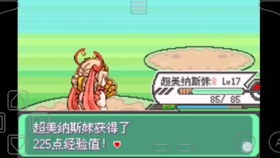Content:
Fishing is an ancient pastime that has been cherished by people across the globe for centuries. It is a tranquil activity that not only allows you to unwind but also provides a thrilling opportunity to catch your own dinner. One of the most popular forms of fishing is rod fishing, which requires the use of a fishing rod, reel, and line. In this article, we will delve into the essential techniques for using a fishing rod and how to effectively fish with a pole.
Choosing the Right Fishing Rod
The first step in mastering rod fishing is selecting the appropriate fishing rod. The type of rod you choose will depend on the type of fish you wish to catch, the fishing environment, and your personal preferences. Here are some factors to consider when choosing a fishing rod:
Length: The length of your rod will depend on the distance you need to cast and the type of fish you're targeting. Longer rods are ideal for casting over long distances, while shorter rods are more versatile for fishing in tight spaces.
Action: The action of a fishing rod refers to how it bends when pressure is applied. Fast-action rods are more sensitive and ideal for catching fish that are easily spooked, while slow-action rods are more forgiving and better suited for larger fish.
Power: The power of a fishing rod determines its strength and durability. Lightweight rods are more sensitive but may break under heavy pressure, while heavy-duty rods can handle larger fish but may be less responsive.
Setting Up Your Fishing Rod
Once you have chosen the right fishing rod, it's time to set it up. Here's how to do it:
Attach the reel: Slide the reel onto the reel seat and secure it with the reel's locking mechanism. Ensure that the line is properly threaded through the guides and the bail wire is closed.
Attach the line: Thread the line through the rod's guides and attach the line to the reel's spool. Adjust the drag to your desired tension.
Attach the lure or bait: Depending on your fishing technique, you may need to attach a lure or bait to the end of your line. For lure fishing, you can use a snap swivel or a direct knot to attach the lure. For bait fishing, a hook is typically attached using a knot such as the improved clinch knot or the Palomar knot.
Casting Techniques

Casting is a fundamental skill in rod fishing. Here are some tips to help you cast effectively:
Hold the rod correctly: Grip the rod with your dominant hand and let your index finger rest on the reel's handle. Your other hand should be placed near the rod's tip for better control.
Wind up the line: Begin by winding up the line to form a loop. The loop size will depend on the distance you wish to cast.
Power up: Swing the rod back with your dominant hand and power up with your arm and shoulder. As you swing, release the line by opening the bail wire with your other hand.
Follow through: Continue to swing the rod forward and through, allowing the line to fly out and land in the desired location.
Baiting and Lure Techniques
When fishing with bait or lures, it's essential to use the right techniques to attract fish. Here are some tips:
Use fresh bait: Fresh bait is more appealing to fish than old or decaying bait. Keep your bait in a cool, dark place to maintain its freshness.
Present your bait or lure properly: Whether you're using live bait or a lure, it's important to present it in a way that mimics the natural movement of the fish's prey. Experiment with different retrieves and presentations to see what works best.
Be patient: Fish may take some time to bite, so be patient and give your bait or lure time to work.
Catching and Handling Fish
When you catch a fish, it's crucial to handle it carefully to ensure its survival. Here are some tips:
Keep the fish in the water: Avoid lifting the fish out of the water for extended periods. Keep it in the water to maintain its oxygen supply.
Use a net: When it's time to remove the fish from the water, use a fishing net to minimize stress on the fish.
Unhook the fish: Use a pair of needle-nose pliers or a dehooker tool to carefully remove the hook from the fish's mouth.
Release or keep the fish: If the fish is in good condition, release it back into the water. If you plan to keep the fish, handle it gently and place it in a livewell or a bucket filled with water.
In conclusion, mastering rod fishing requires practice, patience, and a good understanding of the techniques involved. By choosing the right fishing rod, setting it up properly, and employing effective casting, baiting, and lure techniques, you'll be well on your way to becoming a skilled rod fisherman. Remember to handle fish with care and respect the environment in which you fish. Happy fishing!












